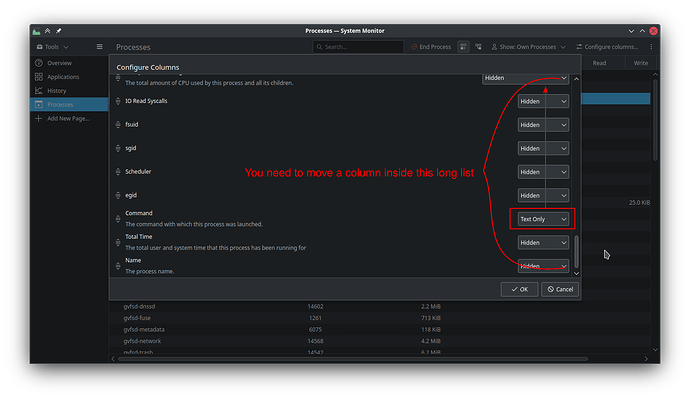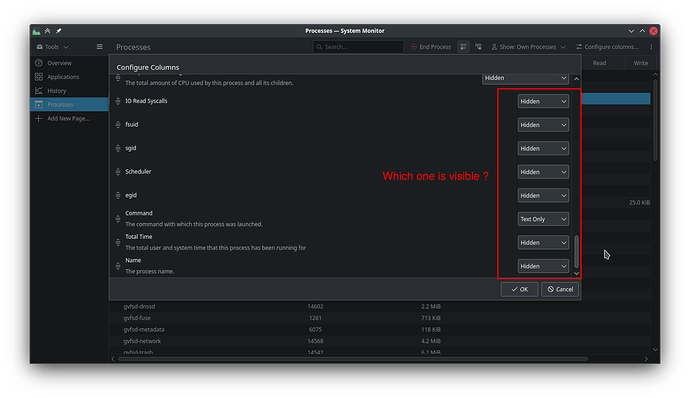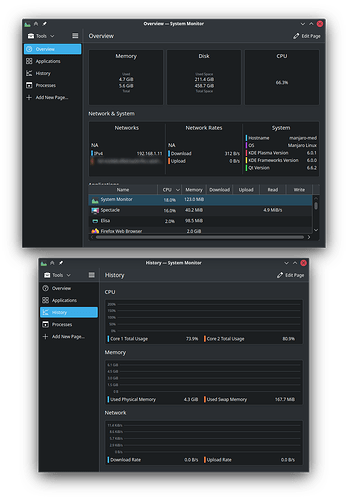I already reported a bug related to how the new system monitor degraded compared to KSysguard, but I don’t know if it’s closed or still open.
The main feature in a system monitor is the process view which gives a full view of all running processes, and the ability to show/hide different columns to diagnostic slowness and bugs. I will list some usability’s differences between the new and the old one:
1.Moving a column by dragging its header:
Ksysguard made it easy by simply left-clicking on the column header and moving it
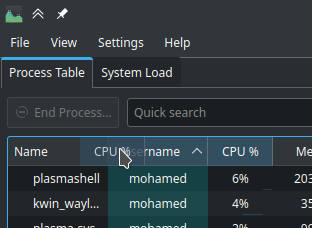
While the new monitor made it impossible to move columns by mouse, and you need to open “Columns Config” popup where you will get stuck in that long vertical list
2. Difficult to distinguish which column is visible or not
Ksysguard made it clear: the element absent from the following list is visible
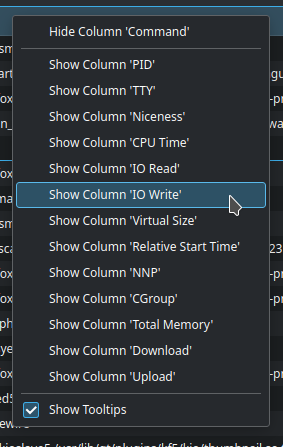
While in new monitor, when you scroll fast in that long list, it’s really difficult to distinguish which column is visible or not, and you need to read item by item to find something written different from “Hidden”
It would be nice if the row of the visible column is marked with different color, or if the visible columns are grouped at the start of the list or in a totally separated list.
3.Adding and removing a column became complex
In KSysguad, to hide a column you simply right click on the column header, and you select “Hide…”, in the lapse of two clicks you are done.
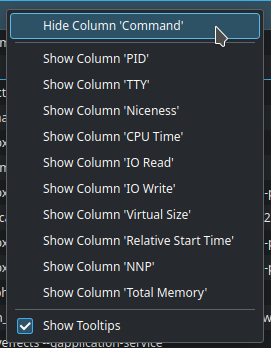
While in the new monitor, you click on “Configure columns” button, and the popup appears, then you scroll that long list searching for your column and you click on its related combobox and select “Hidden”.
The same is for adding a new column.
…

